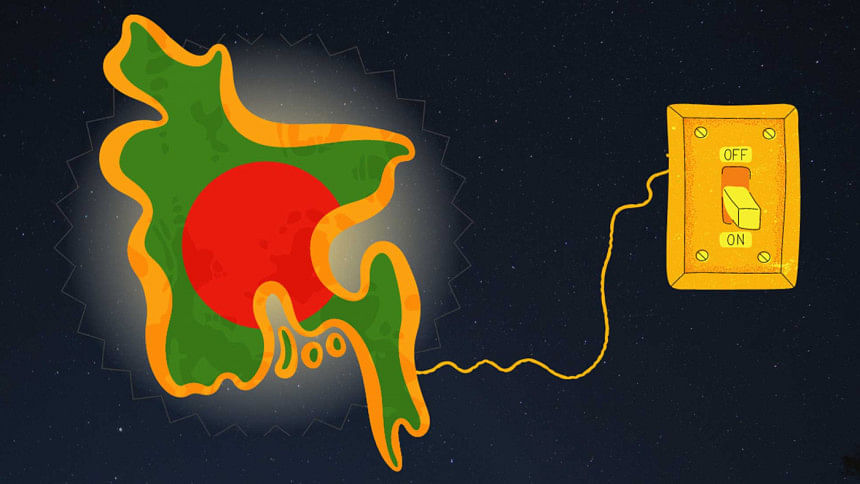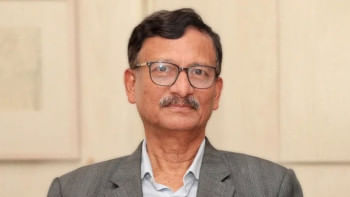Let no one remain outside electricity coverage

Bangladesh has recently achieved a unique milestone: it has become the first country in South Asia to have 100 percent electricity coverage. India has brought 98 percent and Pakistan 74 percent of their respective populations under electricity coverage. For Bangladesh, hitting the 100 percent mark is significant indeed, given how, even a few years ago, the country was scrambling to provide electricity to its people. In 2009, Bangladesh's electricity generation capacity was 4,942MW, with a mere 47 percent coverage. It now stands at 25,514MW.
However, there is an underside of this success. To understand it, we must first understand what 100 percent coverage means. Despite what it sounds like, it doesn't mean that every single household in the country now has access to an electricity connection. Officials of the ministry of energy, power and mineral resources have also tried to clear the air by saying that they provided connections to all customers who had applied for it. "We have electricity coverage in every area of the country either by national grid or the solar home system… We have coverage, but if anyone didn't apply, we can't force them," said Mohammad Hossain, director general of Power Cell, a technical arm of the ministry.
With the prices of commodities and utilities increasing steadily, electricity has gone beyond the purchasing capacity of many. Retail power tariff has doubled from Tk 3.60 per unit in 2009 to Tk 7.13 in 2021. This means, those who aspire to have new connections will have to think twice before applying. While the government claims that electricity has reached even char areas through the use of submersible cables, many living there will not be able to afford electricity due to its price. In an interview with Prothom Alo, M Shamsul Alam, senior vice-president of Consumers Association of Bangladesh (CAB), said, "Those getting power connections in these isolated areas [chars] will be hardest hit by the high costs of fuel. The income of the marginalised has decreased even further during the pandemic. So, the challenge for the government is to ensure that 100 percent of the people actually get power connections and that they do not face power outages."
The problem is not just the high commodity prices. There is an acute problem of overcapacity in the power sector, which is further inflating the price of electricity. According to Bangladesh Power Development Board (BPDB), the country's power system utilisation fell down to 40 percent in the fiscal year 2019-2020 from 43 percent in FY 2018-2019. Going by this data, there is about 60 percent underutilisation of our power capacity, which is significantly higher than the Power Sector Master Plan's target of 25 percent. According to media reports, in FY 2018-19, the government had to pay Tk 9,000 crore as "capacity payment" to the electricity producers. In the end, it is the public who has to bear these additional expenses.
This pain point—both for the government and the public—must be addressed at the earliest. "The government is moving towards a no-electricity-no-payment approach, and this could be a good solution to the capacity payment issue, if implemented effectively," said former World Bank lead economist Dr Zahid Hussain, referring to the government's new modality for renewing contracts of five rental power plants.
There is another side to our electricity coverage problem: inefficient power distribution. While sufficient electricity is being produced, it often does not reach the users due to glitches in the grids and distribution channels. Whenever there is a rain or storm, power goes out. Often, due to system maintenance, power is cut off resulting in load shedding and subsequent public suffering. Power outage, particularly in rural areas, is still a persistent problem.
The fact is, in the last few years, we've spent little on enhancing the capacity of our power distribution system. Since 2009, according to BPDB, while around USD 15 billion has been spent in electricity generation, only USD 2.6 billion has been spent in distribution and USD 1.5 billion in transmission. Inefficient distribution and transmission are clearly taking a toll on our power generation and utilisation capacity. These issues need to be resolved if we want to make the most of our capacity.
At this point, we also need to look at our sources of energy. As one of the countries hardest hit by climate change, we need to consider how we can move towards cleaner sources of energy. In this regard, Dr Hussain suggested that while, in the last 15 years or so, we've had to resort to short-term palliatives—regardless of their environmental costs—we need to work towards reaching greater equity and sustainability now. "We may not completely erase the usage of fossil fuels from the energy mix, but we need to consider if can we be more efficient. Gas is cleaner than coal, and we need to look at whether we can retrofit the 30-40-year-old power plants that we have through technical upgradation to enhance their efficiency," he said.
Bangladesh's achievements in overcoming the power crisis of the early 2000s is indeed remarkable. But we can only be cautiously optimistic about its impact on our overall growth prospects. The power sector is riddled with systemic problems which will keep adding to the electricity costs, taking it further beyond the purchasing capacity of the common people. Unless those are fixed, many people will remain outside the electricity coverage and power outages will continue to be an issue.
It is high time the authorities addressed these longstanding issues so that the entire nation can reap the benefits of the 100 percent electricity coverage. To become self-sufficient in electricity in the real sense of the word, we still have a long way to go.
Tasneem Tayeb is a columnist for The Daily Star. Her Twitter handle is @tasneem_tayeb

 For all latest news, follow The Daily Star's Google News channel.
For all latest news, follow The Daily Star's Google News channel. 



Comments